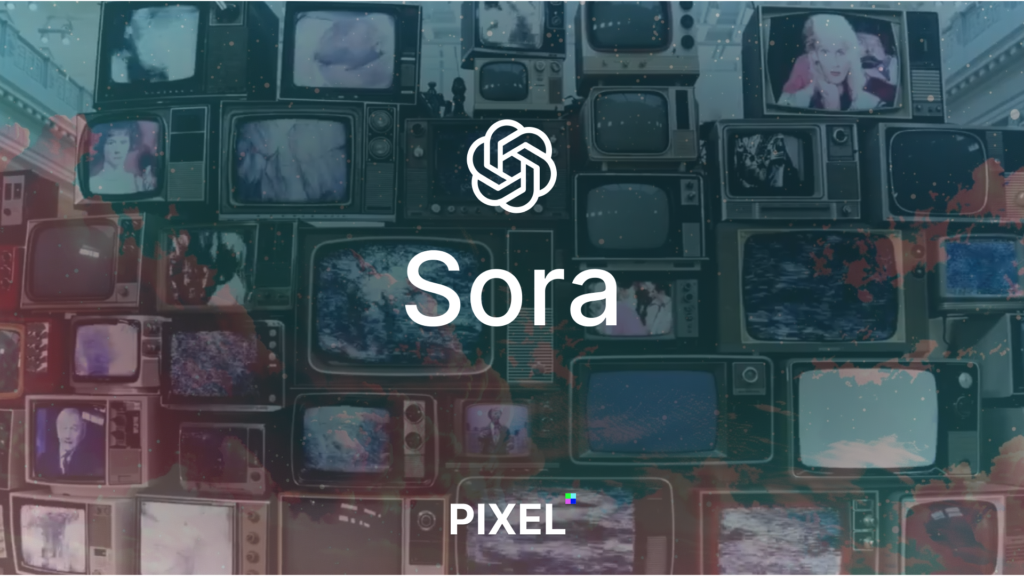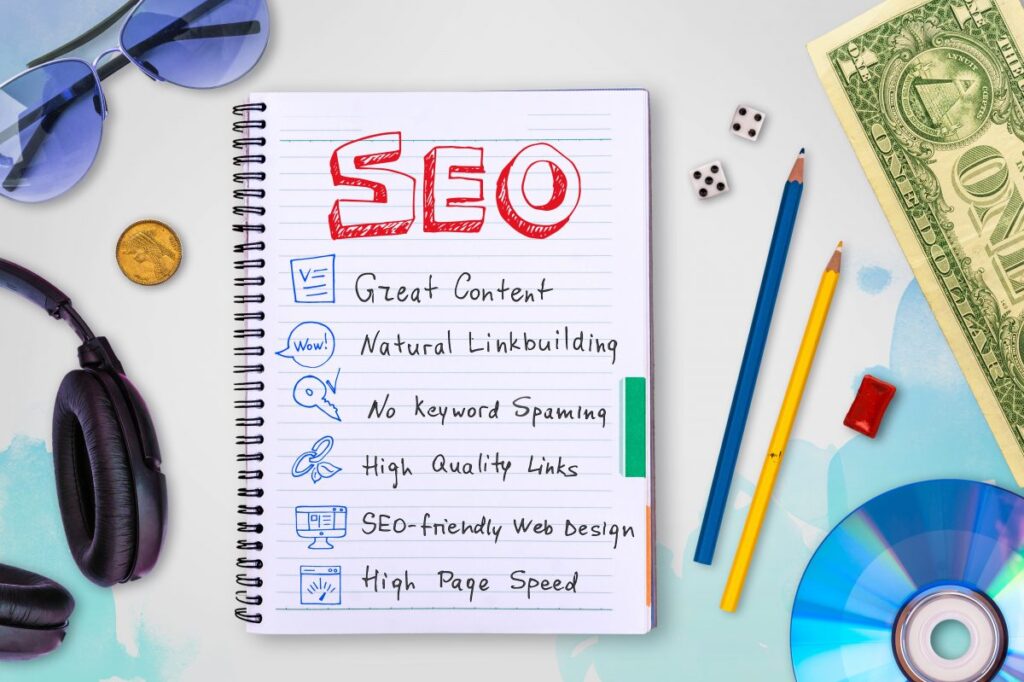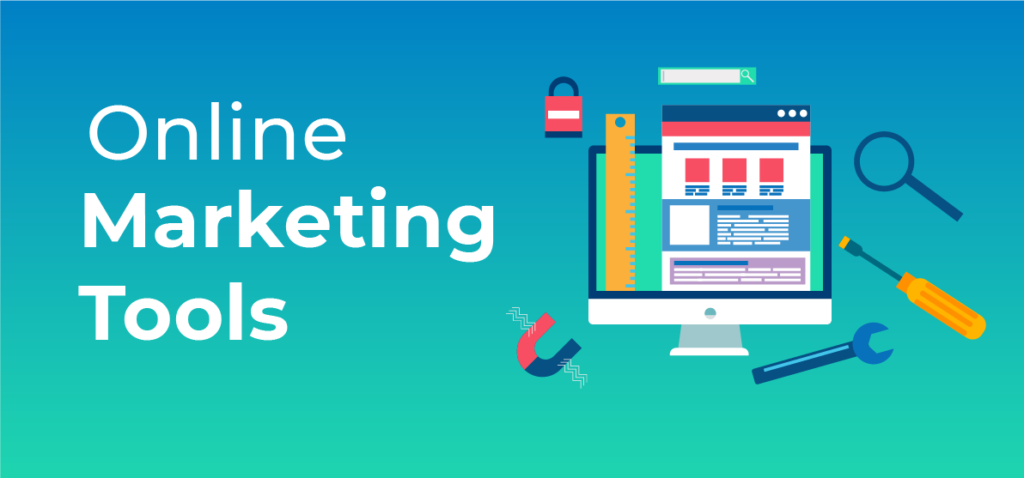One of the key challenges marketers often face is the complexity of creating effective ad campaigns within Google Ads. The process can be daunting, with various settings, targeting options, and ad formats to consider. However, Google’s latest development introduces a game-changing feature: conversational AI.
Conversational AI in Google Ads leverages natural language processing to streamline campaign creation and reduce complexity.
Imagine having a virtual assistant that understands your campaign goals and helps you build the foundation of your ad strategy. This is precisely what Conversational AI aims to achieve.
Here’s how it works:
- You provide a landing page URL
- The Conversational AI goes to work, extracting relevant information from the page.
- It then generates key campaign elements such as keywords, headlines, and descriptions—all in plain language that’s easy to understand.
- You can make modifications with simple prompts before you ship

This not only simplifies the process but also ensures that your ad content is closely aligned with your landing page.
The benefits of this feature are twofold:
- First, it reduces the time and effort required to set up a campaign, making it more accessible for marketers of all skill levels.
- Second, it helps create more relevant and engaging ads, which can lead to improved click-through rates and conversions.
For small business owners managing their own Google Ads, this development is a game-changer. It empowers them to create effective campaigns without the need for extensive marketing expertise.
Even seasoned marketers can benefit from the efficiency and precision that Conversational AI brings to the table.
In our fast-paced digital world, simplicity and relevance are key, and Conversational AI in Google Ads is poised to deliver precisely that.
In the next section, we’ll explore how Google’s AI enhancements are taking automatically created assets to the next level.
What Is The Rundown AI?
Enhancements in Automatically Created Assets: Elevating Ad Relevance
Creating compelling ad content that resonates with your target audience is a critical aspect of digital advertising.
Google Ads has long offered the feature of automatically creating assets, but the latest advancements take this to new heights.
These enhancements involve the integration of generative AI into the asset creation process. What does this mean for advertisers? It means that the ads generated are not just automated; they are contextually relevant and tailored to the specific campaign.

Generative AI has the ability to understand the intent behind a campaign and the nature of the products or services being promoted.
This understanding allows it to generate ad copy and visuals that align seamlessly with the campaign’s objectives.
For instance, if you’re advertising a new line of fitness apparel, generative AI can create ad text and suggest images that highlight the unique features of the apparel, its comfort, and its appeal to fitness enthusiasts.
This level of customization goes a long way toward capturing the attention of potential customers.
The result is ads that are not only visually appealing but also highly relevant to the user’s search intent.
When your ads resonate with what users are looking for, you’re more likely to see higher click-through rates and conversions.
These enhancements are particularly beneficial for businesses with limited creative resources. You can now create ad content that stands out without the need for extensive design or copywriting skills.
It levels the playing field, allowing smaller businesses to compete effectively in the digital advertising arena.
As we move forward, we’ll explore another exciting development: improvements in Performance Max and how generative AI contributes to campaign success.
Improvements in Performance Max: Scaling Campaigns with Generative AI
Scaling advertising campaigns while maintaining performance can be a daunting task. However, Google’s commitment to leveraging AI extends to Performance Max, a solution designed to address this challenge.
Performance Max, powered by generative AI, introduces an array of improvements that make campaign scaling more effective and efficient.
For businesses looking to expand their reach and run campaigns across multiple platforms and networks, Performance Max simplifies the process. It automates asset creation and optimization, ensuring that your ads are optimized for each platform’s unique requirements.
Here’s how it works: Generative AI comes into play when creating custom assets for your campaigns. These assets can include ad headlines, descriptions, images, and more.
What sets generative AI apart is its ability to analyze the campaign’s goals and target audience, tailoring the assets accordingly.
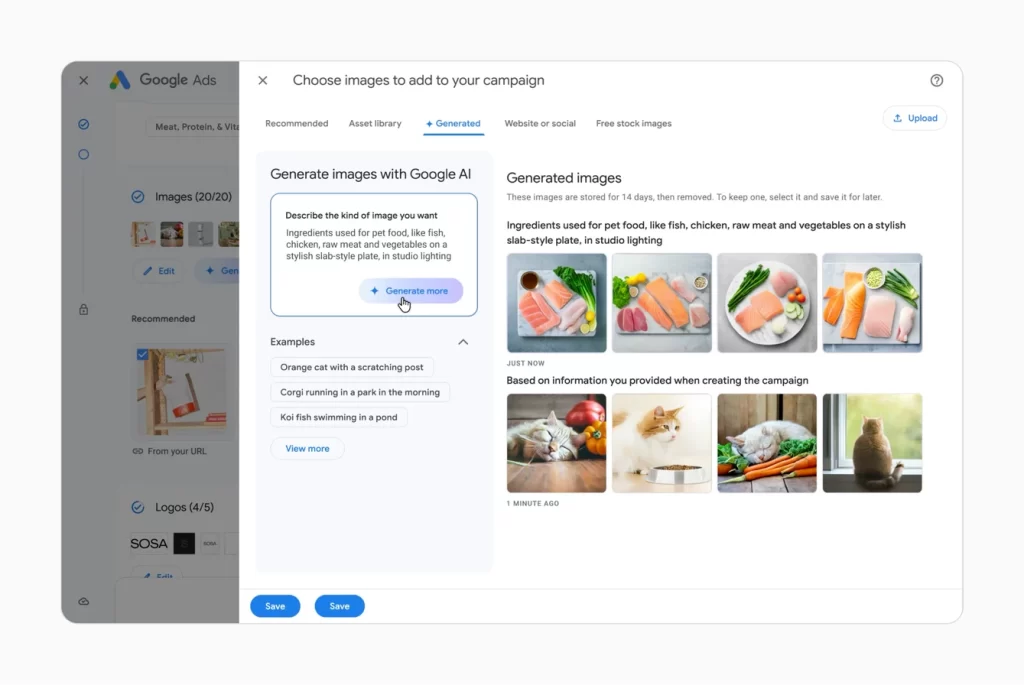
The advantages are clear. Marketers can scale their campaigns without the added workload of manually creating and optimizing assets for each platform.
This not only saves time but also enhances campaign consistency and performance.
Imagine the efficiency of running ads seamlessly across Google Search, YouTube, and Display Network, all while maintaining a consistent brand voice and messaging. With generative AI at the helm, this level of sophistication is within reach.
For businesses with ambitious growth plans, Performance Max represents a powerful tool for achieving those goals. It’s a testament to the potential of AI in simplifying complex advertising tasks and maximizing ROI.
In the next section, we’ll explore the Search Generative Experience (SGE) and how it enhances the integration of ads into AI-powered search experiences.
Search Generative Experience (SGE): Elevating Ad Integration in AI-Powered Search
Search Generative Experience (SGE) is a feature within Search Labs that aims to seamlessly integrate ads into AI-powered search experiences. It’s all about enhancing the user’s search journey by providing more contextually relevant ads.
How does SGE work? It leverages the capabilities of AI to understand user intent and context. When a user performs a search, SGE analyzes the query, the user’s browsing history, and other relevant signals to determine the most appropriate ads to display.
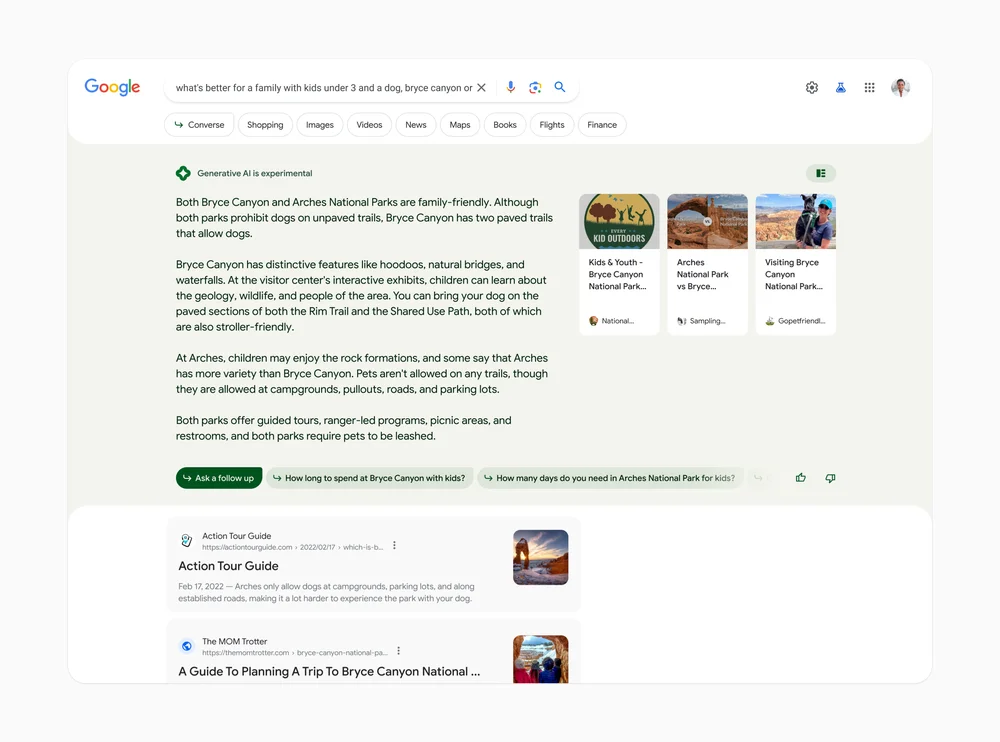
For advertisers, this means that your ads have a higher chance of being shown to users who are actively interested in your products or services.
SGE takes ad targeting to a whole new level by considering not only keywords but also the user’s behavior and preferences.
Imagine you run an online electronics store, and a user has been browsing for smartphones. With SGE, your ad for the latest smartphone model can be displayed to that user when they perform a related search, increasing the likelihood of conversion.
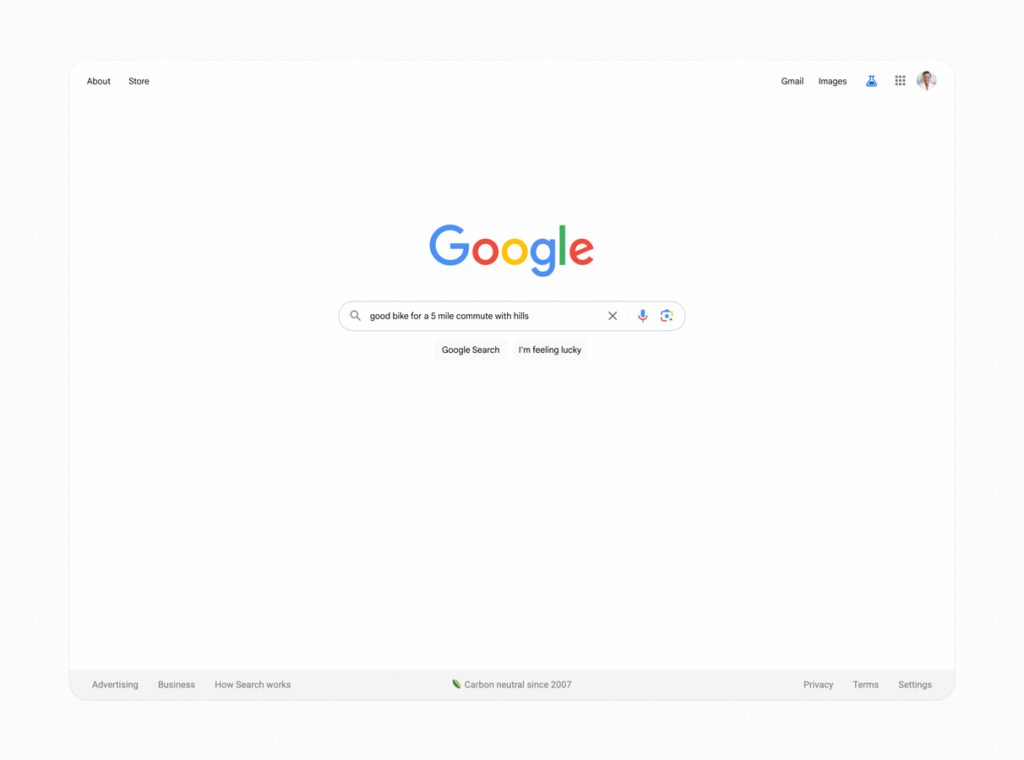
SGE not only benefits advertisers by improving ad relevance but also enhances the user experience. Users are more likely to engage with ads that are directly related to their interests and needs.
As advertisers, embracing SGE means being part of a more dynamic and context-aware advertising ecosystem. Google claims it’s a step toward ensuring that your ads reach the right audience at the right time, ultimately driving better results for your paid campaigns.
Commitment to Privacy and AI Principles: Navigating Potential Pitfalls
While the advancements in AI-powered advertising are undeniably exciting, it’s essential to approach them with a critical eye, especially in the context of user privacy and ethical AI principles.
Google’s commitment to privacy and responsible AI is commendable, but there are potential pitfalls to consider.
One concern is the gathering of user data to fuel AI algorithms.
While Google emphasizes privacy-first approaches, data security and consent remain critical. Advertisers must ensure that they are compliant with privacy regulations and transparent about data usage.
Additionally, there’s the risk of over-reliance on AI.
While AI can streamline campaign creation and optimization, human oversight is essential. Relying too heavily on AI-generated content can lead to ads that lack a human touch or fail to resonate with users.
Balancing the benefits of AI with ethical considerations is a challenge. Advertisers must be vigilant in avoiding discriminatory practices or biases that AI algorithms might inadvertently introduce.
Advertisers must navigate these new tools with care, always keeping user privacy and ethical principles at the forefront.
Data-Driven Results and Advertiser Feedback: Realizing the Impact
It’s one thing to discuss the potential benefits of AI-powered advertising, but it’s another to see tangible results.
Fortunately, early data and feedback from advertisers are shedding light on the real impact of these innovations.
For advertisers using Performance Max, the results are promising. They have reported significant increases in conversions, demonstrating that the integration of generative AI into campaign strategies is delivering tangible ROI. This is a clear indicator of the effectiveness of these advancements.
Small business advertisers, in particular, have seen noteworthy improvements in their Ad Strength scores.
Advertisers achieving ‘Good’ or ‘Excellent’ Ad strength are more likely to capture the attention of their target audience and drive conversions. This positive feedback underscores the accessibility and value of these AI-driven tools for businesses of all sizes.
However, it’s important to note that individual results may vary. Success with AI-powered advertising depends on various factors, including campaign goals, industry, and targeting strategies.
Advertisers should consider their unique circumstances when implementing these innovations.
As we wrap up our exploration of these developments, let’s summarize their impact on digital marketing.
Conclusion: Embracing the Future of Digital Marketing
Google’s latest advancements in AI-powered advertising represent a significant leap forward in simplifying campaign creation, enhancing ad relevance, and optimizing overall performance.
- Conversational AI makes campaign creation more accessible, while enhancements in automatically created assets ensure that your ad content resonates with your target audience.
- Performance Max, with generative AI, simplifies campaign scaling, making it more efficient and effective.
- The Search Generative Experience (SGE) elevates ad integration into AI-powered search, enhancing ad relevance and user experience.
Advertisers must navigate these tools with care, ensuring that they comply with regulations and maintain transparency.
The data-driven results and feedback from early adopters are promising, indicating that these innovations have the potential to significantly improve campaign performance and drive real-world results.
As we look to the future of digital marketing, embracing these advancements can give you a competitive edge. Whether you’re a seasoned marketer or a small business owner, harnessing the power of AI can simplify your advertising efforts and help you achieve your goals in the ever-evolving digital landscape.
It’s time to embrace the future of digital marketing with confidence and seize the opportunities that AI-powered advertising brings.

